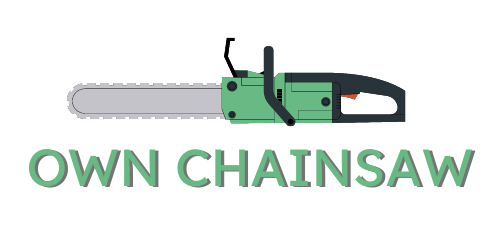We know how much you love your trusty Husqvarna chainsaws. But let’s face it, like any powerful machine, they can come with their fair share of problems.
From the frustratingly dull chain to the downright dangerous kickback, these issues can put a real damper on your cutting experience.
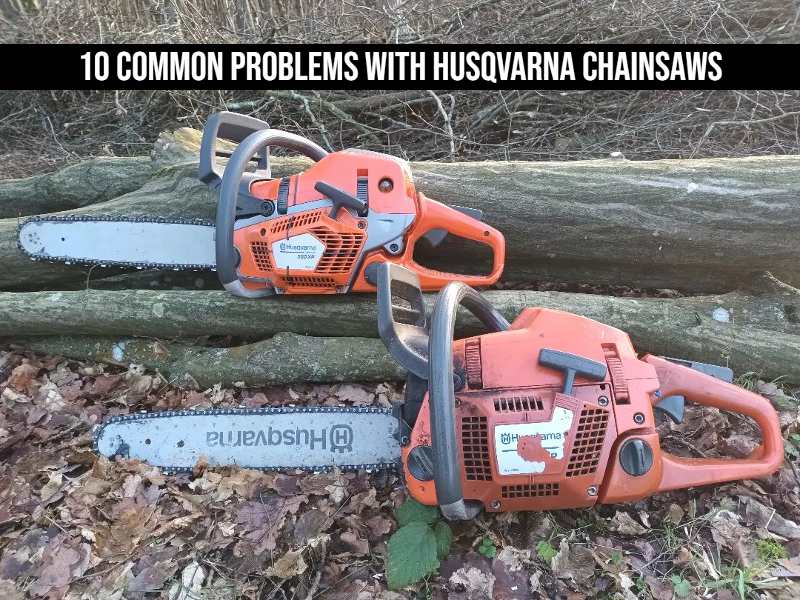
Have you ever found yourself cursing at your saw as it struggles to cut through even the smallest of branches? Or maybe you’ve had a close call with a kickback that left you with a bruised ego (and body)?
And don’t even get us started on the headache-inducing task of trying to start a stubborn saw on a chilly morning.
But fear not, fellow lumberjacks and firewood enthusiasts! We’re here to help you navigate these common problems with your Husqvarna chainsaw, so you can get back to doing what you love – cutting through wood like butter.
So grab a cup of coffee (or a cold beer, we don’t judge), and let’s dive into these pesky problems and how to fix them.
10 Most Common Problems With Husqvarna Chainsaws
Chainsaws from Husqvarna are renowned for their power and reliability. Professionals and homeowners alike love them.
It is possible, however, for even the best chainsaw to malfunction. Let’s discuss the issues that users may encounter with Husqvarna chainsaws and how to fix them.
1. Defective Ignition System
Typically, the problem with Husqvarna chainsaws is a defective ignition system. A chainsaw’s ignition system is responsible for producing the spark that ignites the fuel in the engine.
When the ignition system is defective, the chainsaw may either not start or start and then suddenly stop.
A faulty ignition system can be caused by a range of issues such as a damaged ignition coil, a malfunctioning spark plug, or corrosion on the contacts.
Solution:
If you suspect that your Husqvarna chainsaw has a defective ignition system, there are a few things you can do to troubleshoot the problem.
First, make sure that the spark plug is in good condition and properly connected. If the spark plug is dirty or corroded, clean it using a wire brush or replace it with a new one.
The next step is to check the ignition coil if the spark plug is not the issue. Sparks are generated by the ignition coil, which generates high voltage. A damaged or worn ignition coil must be replaced.
Corroded or damaged wires are also common causes of a defective ignition system. The ignition system’s wires should be checked for damage or corrosion. New wires should be used if any wires are damaged.
2. Clogged Carburetor
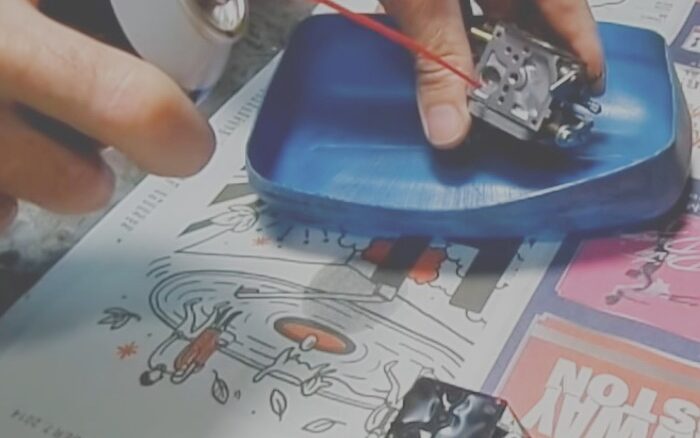
The most widespread problem with Husqvarna chainsaws is a clogged carburetor. A carburetor is an essential part of the engine that mixes fuel and air to create a combustible mixture that powers the engine.
If the carburetor becomes clogged, the engine may not start or may have poor performance and efficiency.
There are several reasons why a carburetor can become clogged. A common cause of this is leaving chainsaw oil in the carburetor for an extended time.
Over time, the oil can thicken and harden, clogging the carburetor and preventing it from functioning properly. Additionally, unburned fuel that is left in the carburetor can also cause a clog.
Solution:
To fix a clogged carburetor in a Husqvarna chainsaw, you will need to clean and potentially adjust the carburetor.
Several pulls of the starter cord will release any excess fuel that may be causing the clog. After disassembling the carburetor, you should thoroughly clean it. Carburetor cleaning solutions and carburetor adjustment tools may be required.
To ensure that the carburetor is working properly, you may need to adjust it once it has been cleaned.
Air-fuel mixtures or idle speeds may need to be adjusted. To prevent engine damage, follow the manufacturer’s instructions carefully when adjusting the carburetor.
3. Clogged Oil ports
Husqvarna chainsaws have two oil inlets located at the back of the bar, which are responsible for lubricating the chain during operation.
These oil inlets can easily become clogged, leading to a lack of lubrication and potential damage to the chain and bar.
Solution:
To avoid the problem of clogged oil ports in Husqvarna chainsaws, it is important to perform regular maintenance and cleaning.
Whenever the bar is removed, take a small wire and clean the oil ports thoroughly. This will help to prevent any debris or sawdust from clogging the ports and ensure that the chain is properly lubricated during operation.
Additionally, it is important to store the chainsaw properly to avoid oil leaks caused by the two oil inlets. After use, clean the chainsaw with a small, sharp wire to prevent oil contamination.
4. Husqvarna Chainsaw not cutting
The Husqvarna chainsaw may stop cutting, which is not uncommon. This can be frustrating, especially if you have a lot of work to do.
There are some reasons why your Husqvarna chainsaw may not be cutting. These include:
Untuned chain:
A mistuned chain is one of the primary reasons why Husqvarna chainsaws fail to cut. Chainsaws need tension and stretch in the strings, and an incorrectly directed chain won’t produce enough tension. Therefore, it is crucial to make sure that the chain is properly tuned.
Loose screws:
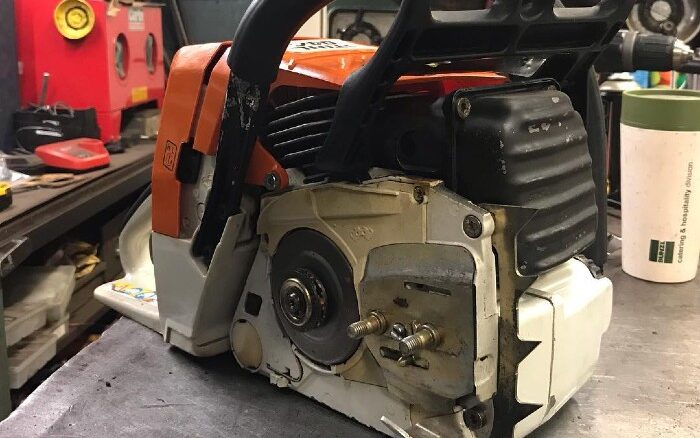
Loose screws can also cause your chainsaw to not cut. When your saw is running, loose screws can result in chain displacement and minimal vibration. The screw adjustment must be fine-tuned, therefore.
Chain chatter:
Chainsaw teeth frequently become dull after some use because the edges used for gutting endure pressure when being sharpened. As a result, the chain may chatter, and this can cause the chainsaw to stop cutting.
Rusted chain bar:
Also, worn-out chain bars may cause the chainsaw to stop cutting. Frequently, worn-out bars are caused by improper lubrication or bent bars. Apply chain oil immediately after lubricating the bent bars.
Faulty clutch:
Lastly, if your Husqvarna chainsaw’s clutch is malfunctioning, it may stop cutting. The clutch pads wear out when there is insufficient pressure on the clutch.
Solution:
If your Husqvarna chainsaw is not cutting, there are several things you can do to fix the problem. Here are some solutions:
Tune the chain:
Tuning the chain is the first thing you should do. Keeping the chain tensioned properly will prevent the chain from becoming too tight or too loose. Chainsaw tension screws can be adjusted for this purpose.
Tighten screws:
If your chainsaw is not cutting due to loose screws, make sure to tighten them. Check all the screws and bolts on your chainsaw and tighten any that are loose.
Sharpen the chain:
Sharpening your chainsaw chain will fix chain chatter that prevents it from cutting. Chainsaw files or chainsaw sharpeners can be used for this purpose.
Replace chain bar:
The chain bar needs to be replaced if it is rusted or worn out. Lubricate the bar with chain oil to prevent it from wearing out quickly.
Replace clutch:
You will need to replace your chainsaw’s clutch if it is not cutting due to a faulty clutch. Taking your chainsaw to a professional for repair is a more complicated task.
5. Flooded Engine
A flooded engine occurs when too much fuel enters the engine, making it difficult or impossible to start. This problem is often caused by an overworked fuel pump that pumps too much fuel into the carburetor.
When the engine is flooded, it may emit a strong odor of gasoline, and the spark plug may become wet. If the engine is flooded, it may not start even after multiple attempts, and it may require intervention to get it running again.
Solution:
To fix a flooded engine on a Husqvarna chainsaw, follow these simple steps:
Drain the fuel tank: The first step is to drain all the fuel from the saw’s fuel tank. This can be done by disconnecting the fuel line from the carburetor and allowing the fuel to drain.
Spin the throttle: Once the fuel tank is empty, spin the throttle while pulling the cord to clear any remaining fuel from the carburetor.
Clean debris: If the problem persists after clearing the fuel, check for debris in the carburetor. Whenever you find debris, clean it up.
Deactivate the choke: Finally, deactivate the choke, and try starting the engine again.
6. Stiff Guide Bar Grooves
A problem common to Husqvarna chainsaws is the accumulation of sawdust along the guide bar and chain.
This issue impedes the smooth rotation of the chain and can cause nicks in the chain, resulting in reduced cutting efficiency and performance. Stiff guide bar grooves can also lead to costly chainsaw repairs due to wear and tear.
Solution:
To fix a stiff guide bar groove in a Husqvarna chainsaw, the covers for the chain, the bar, and the drive case should be removed.
The grooves should then be cleaned with a small screwdriver or a piece of wire. Any nicks in the groove should be smoothed out using a file, making strokes perpendicular to the bar’s flank.
For a more thorough fix, the drive case lid should be removed, and the chain should be dismantled before reassembling the bar.
Once the bar is reassembled, the grooves should be cleaned, and the chain should be lubricated before starting the chainsaw.
7. Filthy Filters
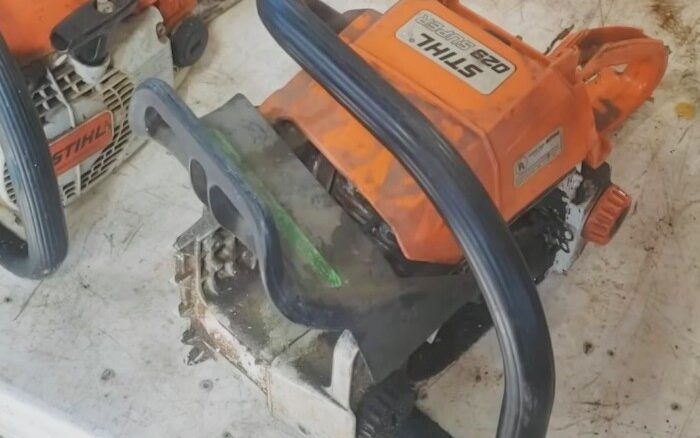
A dirty filter in a Husqvarna chainsaw can cause a decrease in power and performance, and in some cases, it can even cause damage to the chainsaw itself.
The air filter is responsible for filtering out dirt, dust, and debris from the air before it enters the engine. As these particles accumulate over time, the filter can become clogged, reducing airflow.
Solution:
This includes cleaning the air filter and replacing it when necessary. Some Husqvarna chainsaws use a plastic air filter that can be washed with soap and water, while others require a solvent to clean the filter properly.
Additionally, it is recommended that the carburetor and throttle be checked and cleaned at the same time as the filters.
This ensures that the engine is running smoothly and efficiently, reducing the risk of further damage or decreased performance.
Another important filter to check is the gasoline filter screen. This filter is responsible for catching any debris or particles that may have made their way into the gasoline.
Using solvent to clean this filter may require extra caution, as the screen must be carefully removed and cleaned before being replaced.
8. Husqvarna Chainsaw keeps turning
An issue commonly encountered by Husqvarna chainsaw users is the chainsaw continuing to turn even after it has been turned off.
This problem can be caused by a broken clutch or defective return springs. The clutch helps to engage or disengage the chain, and if it is broken, the chain will continue to rotate even when the engine is turned off.
Similarly, if the return springs are defective, they will not be able to return the clutch to its original position, which will also result in the chainsaw continuing to turn.
Solution:
First, identify the cause of the issue with your Husqvarna chainsaw. A broken clutch or return spring can only be repaired by replacing them.
Chainsaw clutches are essential components that engage and disengage the chain. When the engine is off, a broken clutch can cause the chain to keep turning.
Replacing the clutch assembly is the best solution for dealing with sticky clutch pads. This will ensure that the clutch engages and disengages properly, allowing you to control the chain and prevent any accidents.
9. Vibrating
Husqvarna chainsaws, often experience high vibrations. This can be due to some factors, including the chain’s tension being too loose or improperly adjusted.
Over time, chains tend to loosen with use, which can result in excessive vibration during operation. High vibrations can cause fatigue and discomfort for the operator, making it difficult to use the chainsaw for an extended period.
Solution:
To reduce the vibration experienced when using a Husqvarna chainsaw, the chain tension needs to be adjusted correctly. The chains tend to loosen with use, and modern chainsaws come with an external method of increasing tension.
You can easily tighten the chain until it is snug against the bar, but still easily turned by hand. This will reduce the vibration and ensure that the chainsaw performs optimally.
10. Husqvarna Chainsaw Won’t Stay Running
Husqvarna chainsaws face a problem that they won’t stay running sometimes. This can be frustrating for the user and can cause significant delays in completing a task.
The problem can be caused by various factors, such as old fuel, dirty carburetors, and clogged vents.
Solution:
To troubleshoot this problem, there are a few things to check. Firstly, check the fuel mixture to ensure that it is fresh. If not, drain the old fuel and mix a fresh batch according to the manufacturer’s instructions.
Secondly, check the carburetor for dirt and debris, which can clog the jets and prevent the chainsaw from running.
Clean the carburetor thoroughly or replace it if necessary. Clean the vents with compressed air or replace the air filter if necessary.
FAQs
Why is my Husqvarna chainsaw chain dulling quickly?
One common reason for a dull chain is improper sharpening. Make sure the chain is sharpened at the correct angle and depth, and that the file is sharp. Another reason could be using the wrong type of chain for the job, or cutting through dirty or abrasive materials. Lastly, a loose or worn chain can cause it to dull quickly, so make sure it is properly tightened and lubricated.
What should I do if the chain on my Husqvarna chainsaw keeps falling off?
If the chain on your Husqvarna chainsaw falls off, check to make sure that it is properly tensioned and lubricated. Additionally, ensure that the chain is sharp and that the chain brake is not engaged. If the problem persists, the guide bar or chain may be worn and need to be replaced.
Why is my Husqvarna chainsaw not producing enough power?
There are several reasons why your Husqvarna chainsaw may not be producing enough power. Some possible causes include a clogged air filter, a dirty spark plug, a faulty carburetor, or a worn-out chain.
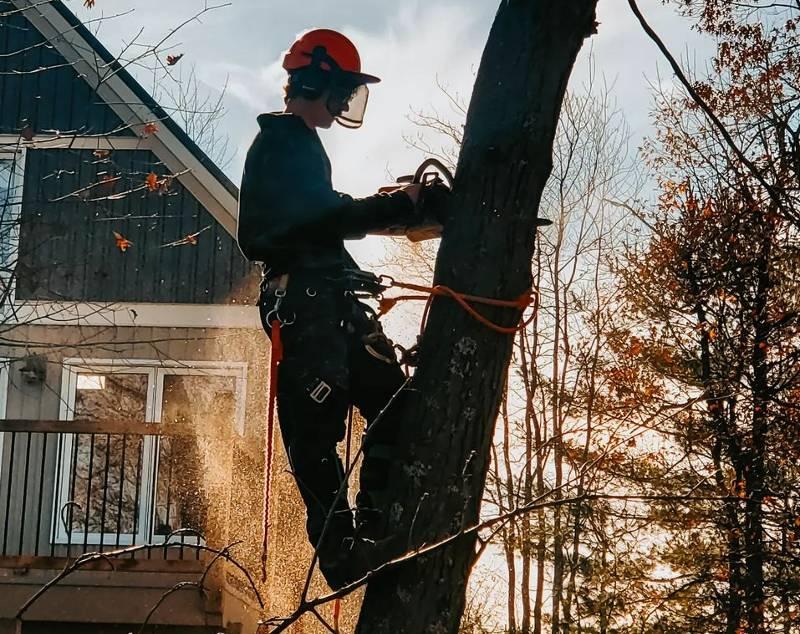
I am Senior Editor and CEO and I have been a chainsaw enthusiast for over 12 years. As a passionate chainsaw enthusiast, I have got a wealth of knowledge and experience with chainsaws, and I am constantly striving to expand my expertise and knowledge. Read More!
